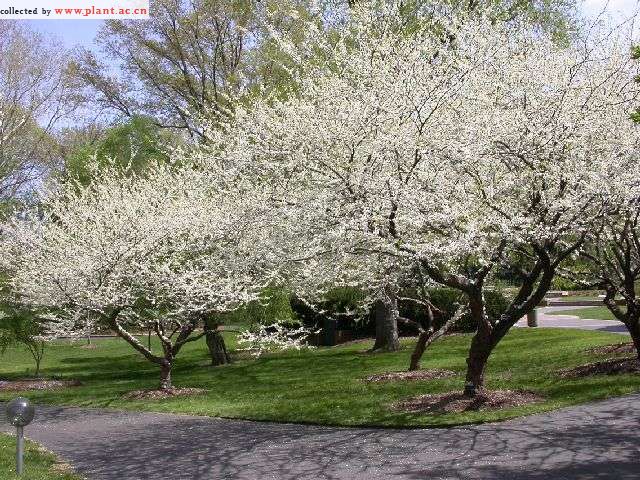Cercis canadensis f. albaRedbud (white cv.)
科:蝶形花科
Family:fabaceae
属:紫荆属
common name:Redbud (white cv.)
introduce:Plant Type: Tree
Family: Fabaceae
Missouri Native: No
Native Range: None
Height: 20 to 30 feet
Spread: 25 to 35 feet
Bloom Time: April
Bloom Color: White
Sun: Full sun to part shade
Water: Medium moisture
Maintenance: Low
General Culture:
The best environment for white redbud is full sun to light shade with moist well-drained deep soil. It is adaptable to other soil types but will not grow well in permanently wet or poorly drained soil. Since this tree does not transplant easily, it should be planted when young. It is best to buy redbuds from local sources as trees from other areas may not be cold-hardy in your region.
Noteworthy Characteristics:
Although the typical redbuds are best known for their profuse pink pea-like flowers, forma alba has white flowers. It purportedly comes true from seed; the young seedling leaves should not have a purplish pigment. The heart-shaped leaves of redbud are 3-5" across and its fruit are brown flat pods about 2-3" long. The trunk of this small tree usually branches close to the ground resulting in a spreading flat-topped to rounded crown.
Redbuds are subject to damage by insect pests such as tree hoppers, caterpillars, scale, and leafhoppers. Diseases include Verticillium wilt, leaf spots, and the worst disease, canker. Keeping the tree vigorous by regular watering and fertilization and by pruning out dead branches will help keep the tree healthy. Alba may be less robust than the typical redbud.
Uses:
Redbud is an attractive tree in many situations including a specimen tree, the shrub border, or as a street or lawn tree in residential areas. It is especially attractive in group plantings or in naturalized settings.
